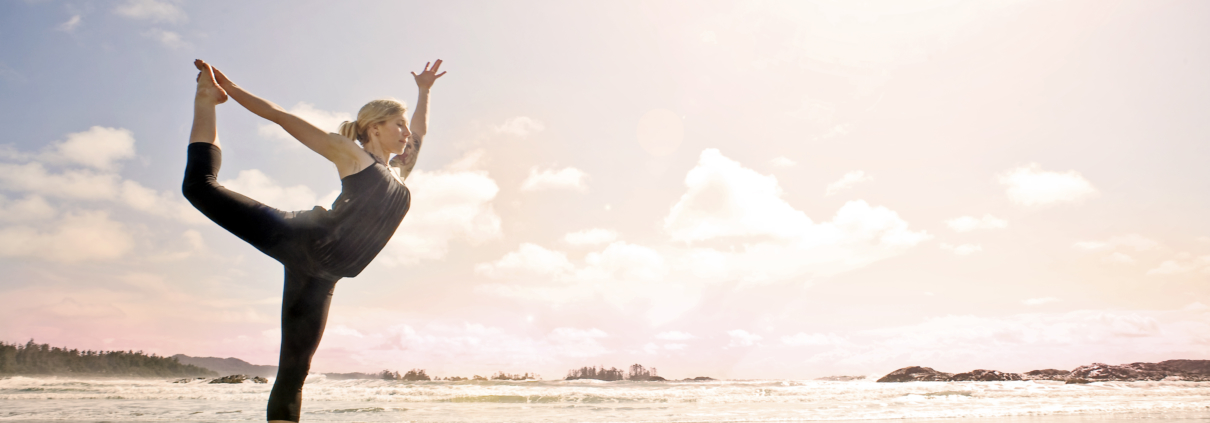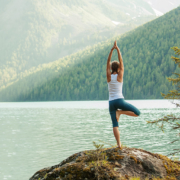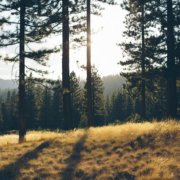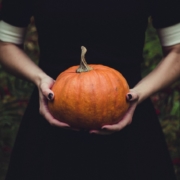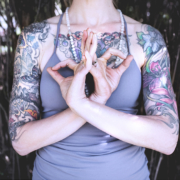Awakening Vitality: Yoga For The Spring Season
We have just passed the vernal equinox and spring is officially here, but here where I live in Pemberton BC the snow is still melting, the flowers have yet to bloom and the days are both cold and damp. Early spring is not a particularly lovely season here in the Pacific Northwest and according to Ayurveda it is one in which kapha dosha can be prone to aggravation.
Aggravated kapha dosha will often present as increased congestion, feelings of dullness & stagnancy, slow digestion and a craving for sleep and sweets. Getting away to a warm beach in Mexico would be a quick fix, but if that is not an option we can turn to our yoga practice to support us in finding balance.
My personal practice during the spring season is focused on awakening vitality and reducing the symptoms of excess kapha dosha. To do this I will engage a more dynamic approach to practice with an emphasis on postures that create inner heat, open up the front and sides of the body, and increase prana or vital energy. Your yoga practice does not need to be long and involved to be effective, but it should be fairly active- think Sun Salutations over reclining poses. On a daily basis, I rarely practice for longer than 30-45 minutes at a time, but I weave kapha reducing postures into my flows so that I can draw a lot of energy from my time on the mat. Below are some of my favourite posture types to work with in my springtime yoga practice.
Expressive Standing Poses
Standing postures are great for creating a grounded sense of strength and focus while warming up the major muscles groups in
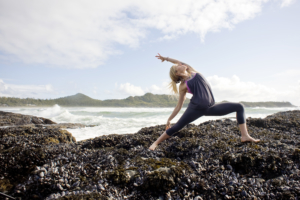 the body. They are also very safe poses that can be modified to suit your individual needs as a practitioner. To reduce kapha and increase vitality during the spring season work these expressive standing poses into your home practice sessions.
the body. They are also very safe poses that can be modified to suit your individual needs as a practitioner. To reduce kapha and increase vitality during the spring season work these expressive standing poses into your home practice sessions.
- Virabhadrasana 1, 2 & 3/Warrior Postures
- Natarajasana/Baby Dancer
- Trikonasana/Triangle
- Parsvakonasana/ Side Angle
- Ardha Chandrasana/ Half Moon Pose
- Utkatasana/ Fierce Pose
Practice Tips: hold your static standing poses for a minimum of five long breaths and work up to 30-second holds. Practice deep breathing while holding your poses and create an even quality of engagement through your legs and hips while rooting firmly down through your legs to create a sense of stability and spaciousness through your torso.
Simple Backbends
Backbending postures are fabulous for reducing mental dullness or lethargy. They are stimulating poses that open up the chest 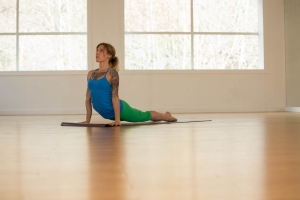
 and abdomen (key sites for kapha congestion) and will often wake you up better than a cup of coffee. Don’t be afraid to weave more backbends into your home practice during the early spring season as they are the perfect medicine for these grey days. Some of my favourite backends for shorter home practices are-
and abdomen (key sites for kapha congestion) and will often wake you up better than a cup of coffee. Don’t be afraid to weave more backbends into your home practice during the early spring season as they are the perfect medicine for these grey days. Some of my favourite backends for shorter home practices are-
- Shalabhasana/Locust
- Bujanghasana/Cobra
- Urdhva Mukha Svanasana/Up Dog
- Ustrasana/ Camel
- Danurasana/Bow
Practice Tips: build progressively towards the larger backbends and be sure to include a few good thigh stretches in your practice. Use strong legs when backbending to support your lower back and focus your spinal extension into your upper back and heart space. Use deep breathing while backbending and take time after a backbend to regulate your breathing if it becomes fast or agitated, this will help strengthen your nervous system without aggravating it.
Stronger Twists
Twists are such amazing postures as they can be done gently to help warm the body up, quietly to support unwinding at the end of practice, and with strength to increase heat and circulation mid-practice. During the spring season, I like to work stronger twists 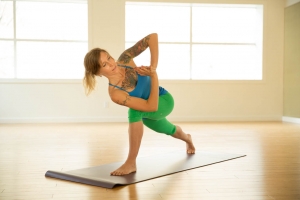 into my home practice, particularly those done in standing or lunging shapes as they really help me to “wring out” my stiff spine and hips, while awakening my agni or digestive fire. These are some of my favourites-
into my home practice, particularly those done in standing or lunging shapes as they really help me to “wring out” my stiff spine and hips, while awakening my agni or digestive fire. These are some of my favourites-
- Parvrita Parsvakonasana /Revolved Side Angle or Prayer Twist variations
- Parvrita Trikonasana/Revolved Triangle
- Parvrita Utthita Hasta Padangustasana/ Revolved Hand to Big Toe
- Ardha Matseyandrasana/ Half Lord of the Fishes or Seated Twist
- Jathari Parvritasana/ Revolved Belly Pose (done actively)
Practice Tips: as always work with an even quality of muscular engagement through your legs and hips to support your spine in rotation. Create lots of length through the sides of your body and keep your front ribs softened backwards and inwards in order to keep your twists honest. Work to hold your poses a minimum of 5 deep breath, working up to 30 seconds each. Focus on deep breathing to get the maximum benefit from these powerful shapes.
If you would like to get monthly suggestions for your personal sadhana based on the astrological season of the year please join me for my 13 Moon’s Circle which begins on March 20th 2020 and includes a full year of inspiration and support. This program only opens once per year at the time of the vernal equinox.
